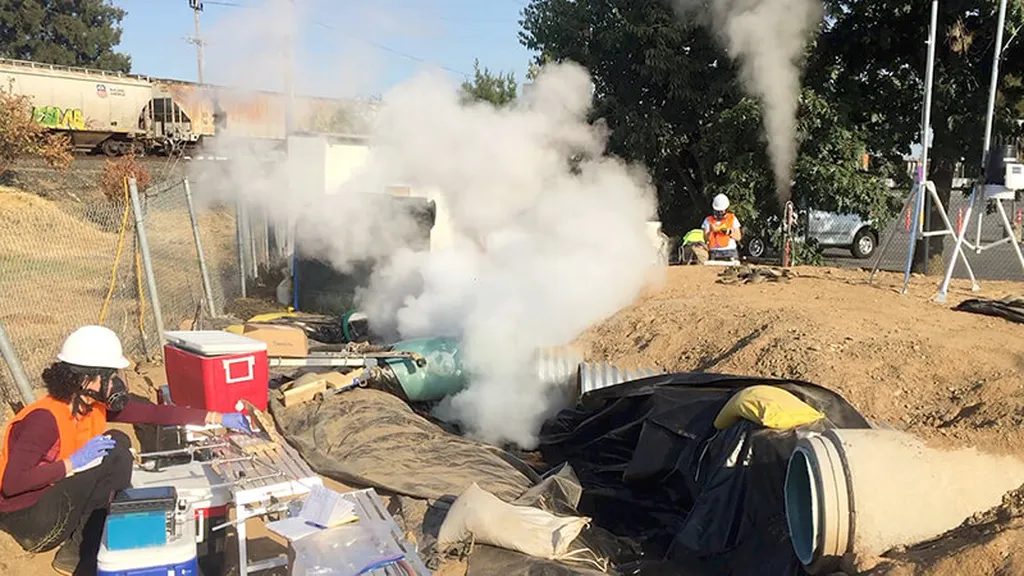In the quest to fortify water infrastructure and mitigate potential failures, a groundbreaking study led by Myeong Eon Choi from the Department of Civil Engineering and Engineering Research Institute at Gyeongsang National University has shed new light on the dynamics of water pipe repairs. Published in the Korean Journal of Environmental Engineering (대한환경공학회지), Choi’s research employs advanced computational techniques to analyze and optimize repair methodologies, offering a promising blueprint for enhancing the safety and efficiency of water supply systems.
Water main breaks are a persistent challenge for municipalities and utilities, often leading to significant downtime, financial losses, and service disruptions. Choi’s study focuses on developing a standardized approach to repairing these critical infrastructure components, ensuring that the methods employed are both safe and appropriate. By leveraging Computational Fluid Dynamics (CFD) and water-hammer analysis, the research provides a comprehensive understanding of the forces at play during pipe repairs.
“Our goal was to examine the safety and appropriateness of current water pipe repair construction methods and to suggest a methodology that could serve as a standard,” Choi explains. The study’s innovative use of CFD techniques allows for the precise calculation of flow field forces applied to various pipe wall segments, offering insights into the pressure dynamics during repairs. The findings reveal that the pressure inside pipe bends is lower, while the outside experiences relatively higher pressure, a phenomenon attributed to dynamic effects transfer due to flow velocity.
One of the most compelling aspects of the research is its application of water-hammer analysis to simulate temporal changes in pressure head at key points on the connecting pipeline. The results indicate that a sudden closure of the inlet valve can lead to a significant increase in pressure head, potentially causing water hammer phenomena. “When the valve closing time was 30 seconds, the pressure head at the branch point adjacent to the closed valve increased by up to 150 meters,” Choi notes. This finding underscores the importance of controlling valve closing times to prevent potential damage and ensure the longevity of water supply systems.
The implications of this research extend beyond immediate repair methodologies. By establishing a standardized approach to water pipe repairs, Choi’s work could significantly impact the energy sector, where water infrastructure plays a crucial role in various processes. The ability to predict and mitigate potential failures can lead to substantial cost savings and improved operational efficiency.
Moreover, the study’s emphasis on computational techniques highlights the growing role of advanced technologies in infrastructure management. As water systems become increasingly complex, the need for sophisticated analytical tools becomes paramount. Choi’s research paves the way for future developments in this field, offering a framework for integrating CFD and water-hammer analysis into standard repair practices.
In an era where infrastructure resilience is more critical than ever, Choi’s work provides a valuable contribution to the ongoing efforts to enhance water supply systems. By offering a methodology that ensures safety and appropriateness, the research not only addresses immediate challenges but also sets the stage for future advancements in the field. As the energy sector continues to evolve, the insights gained from this study will be instrumental in shaping the next generation of water infrastructure management practices.

